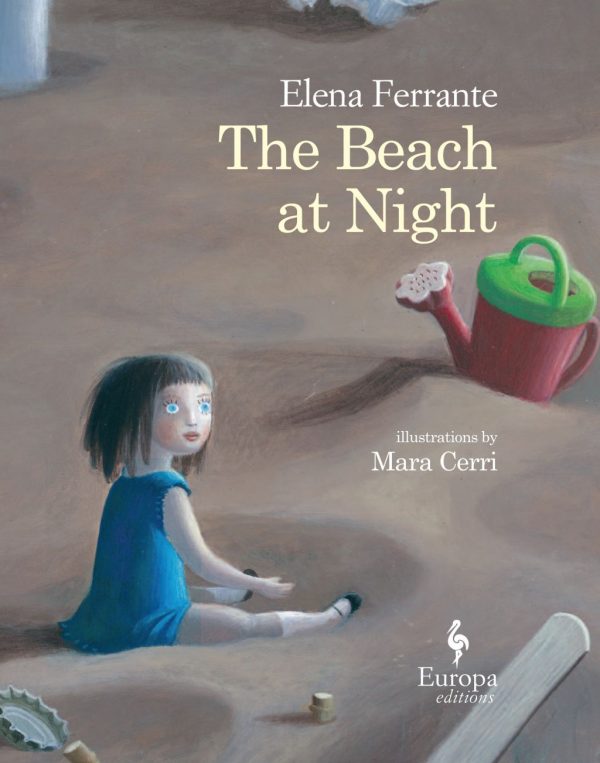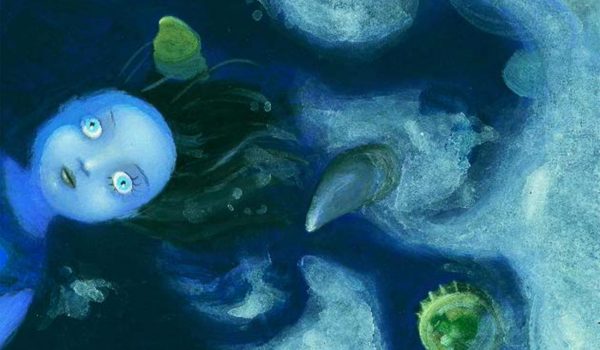Picture books in the United States are often happy and cute and directed at only children. In Europe, there tends to be more of an attitude of the picture book as art, and so they sometimes are more grim than in the USA. Elena Ferrante’s beautiful, dark picture books show some of the scarier parts of life. Her new story, The Beach at Night, is about Celine, a doll, who is lost from her owner, Mati. Mostly innocuous but a little creepy, the book also includes some expletives and some vaguely scatological themes. This pushes this “children’s book” into a slightly different category.

Source: Amazon
Ann Goldstein, the American translator of Ferrante’s novels, turned “cacca” into a much cruder Anglo-Saxon word for “excrement.” The original Italian is simpler and childlike. Goldstein was probably trying to make it rhyme in English, but the phrasing has a much different feeling than the original: “Open your mouth / Eat the poo / Drink the pee.”
In any case, the passage in which the word appears is disturbing. The lost doll, Celina, is tormented by a mean beach attendant. He taunts her with a cruel song, which Goldstein translates as:
Open your maw
I’ve [expletive] for your craw
Drink up the pee
Drink it for me
Shhh! Not a word.
The lost doll must go through many fairy-tale horrors. She wants her owner, Mati, very badly.“Mati, Mommy, where are you?” she calls to her owner. “I’m your doll, don’t abandon me.”
She recalls how Mati used to defend her, even when “boys wanted to hit us, kiss us, see our underpants,” and urinate on their feet. In the Italian edition, Ferrante uses a babyish word for penises (“pisilletti,” or little peas) that is not particularly charged in Italian. Goldstein translates it with a coarse word American parents don’t use with children, highlighting the dark vibe of sexual predation which won’t be lost on American readers of picture books.
There is a happy reunion at the end, though. The doll, Celine, is finally picked up by a cat, which turns out to be the pet who distracted Mati when Celine got lost. The girl has been crying all night, missing Celina, and it is sweet when they are back together.
Mati definitely plays the role of mother to Celine. Celine herself goes through themes of death and rebirth while she is lost from her human mother and owner. The author portrays motherhood as comforting and terrifying; as life and death. Ferrante possesses similar themes in her adult novels, including the tenderness evoked between a child and their doll.
Is this appropriate for children? Should picture books be appreciated as their own art form regardless of the material? Is this specific English translation too shocking for a U.S. audience?
YouTube Channel: London Review Bookshop
Featured image via the Merrick Library Blog
Save




